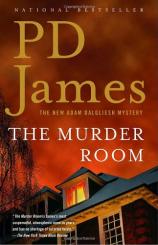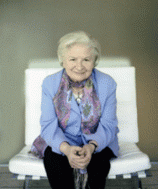Reading Group Guide
Discussion Questions
The Murder Room: An Adam Dalgliesh Mystery

1. Book One is dedicated to introducing a wide array of characters, all of whom are possible suspects in the murder of Neville Dupayne. Judging from the presentation of characters here, who seems most likely to be the killer, and why?
2. Conrad Ackroyd tells Adam Dalgliesh, "You should read detective fiction. . . . Real-life murder today, apart from being commonplace and --- forgive me --- a little vulgar, is inhibiting of the imagination" [p. 8]. What are the implications of this joke for the novel to follow?
3. Dalgliesh's first visit to the museum just a week before the first murder, we are told, is "one of life's bizarre coincidences which . . . never fail to surprise" [p. 3]. What other coincidences does James introduce either to complicate or resolve the plot?
4. Like many of James's novels, The Murder Room demonstrates a detailed interest in architecture and in historic buildings. How do these settings focus the reader's attention, and how do ideas about the city of London enrich the novel?
5. How is the plot revealed? How does James manipulate pacing to maximum effect? Which are the most suspenseful moments?
6. The Murder Room introduces several unhappy families --- the Dupayne siblings, Tally Clutton and her daughter, Muriel Godby's family, Neville Dupayne and his daughter, among others. To what extent do these families represent the ills of contemporary society? Or are they simply examples of unsentimental realism?
7. Adam Dalgliesh is in love: "He felt as vulnerable as a boy in love for the first time. . . . Somehow he had to find the courage to risk that rejection, to accept the momentous presumption that Emma might love him" [pp. 28--29]. In The Murder Room, the hero's personal life impinges, to some degree, on his professional life. How is the love plot --- Dalgliesh's interest in Emma Lavenham and hers in him --- incorporated into the mystery plot?
8. Tally Clutton clearly has a motive for murder. The reader knows that she didn't do it; however, since she arrived at the museum just in time to witness Neville Dupayne's death. How seriously is she considered a suspect by Dalgliesh and his team? If there is a single character at the novel's moral center, is she the one? Is her near-death the climax of the plot?
9. How does the novel's epigraph, from T. S. Eliot's World War II poem "Burnt Norton," resonate with the story? Does the epigraph suggest that James's larger theme is that of time --- or history --- and identity?
10. As the plot proceeds, is it possible to guess or deduce the killer? If so, at what point is it possible, and on what grounds?
11. Conrad Ackroyd is writing a series of articles arguing, "Murder, the unique crime, is a paradigm of its age" [p. 7]. Do the events of the story bear out Ackroyd's theory? Or does the novel seem to prove instead that murder is the result of human emotions --- like rage, resentment, or jealousy --- that don't change over time?
12. P. D. James is unusually sensitive to the difficulties of finding love, particularly for women. In The Murder Room there are several unattached women, including Kate Miskin, Tally Clutton, Muriel Godby, and Caroline Dupayne. How accurately does the conversation between Emma and her friend Clara reflect these difficulties [pp. 47--48]? How realistic is James's portrayal of the romantic struggles of her female protagonists?
13. In The Murder Room, it seems that the contemporary world, with its cell phones, traffic jams, and so on, is unsatisfactory and even dangerous. Early on, Dalgliesh muses that a lunch at the Ackroyds' villa gives visitors "memories of a more leisurely age and . . . the temporary illusion that the dangerous world was as susceptible as was this domesticity to order, reason, comfort and peace" [p. 6]. In what ways does Adam Dalgliesh attempt to procure comfort and peace for himself? How does he react to the stress of his profession, and does he long for another kind of life?
14. Neville Dupayne wants to close the museum because he feels strongly that people are too obsessed with the past, and therefore they neglect the problems of the present [pp. 191--92]. Is Muriel Godby obsessed with the past? How does the novel's conclusion fit into Neville and Muriel's worldviews?
15. Many moments in The Murder Room recall the prominence of war in characters' memories. Emma remembers walking with her nurse to a war memorial [p. 46], David Wilkins wants to own a painting of Passchendaele as a memorial to his grandfather [p. 250], Tally remembers the bombing raid that orphaned her [p. 49], and Dalgliesh remembers his family's gardener's stories about his service in World War I [p. 209]. What larger point is James making about the two world wars and their impact on English life?
16. Reflecting on the investigation, Kate Miskin thinks, "A single man had died and the squad would spend days, weeks, maybe longer deciding the how and why and who. This was murder, the unique crime. The cost of the investigation wouldn't be counted. Even if they made no arrest, the file wouldn't be closed. And yet at any minute terrorists might rain death on thousands" [p. 133]. Why is murder considered "the unique crime," and why is the Murder Room the most visited exhibit in the museum? Is James suggesting that something about murder is particularly disturbing and provocative?








